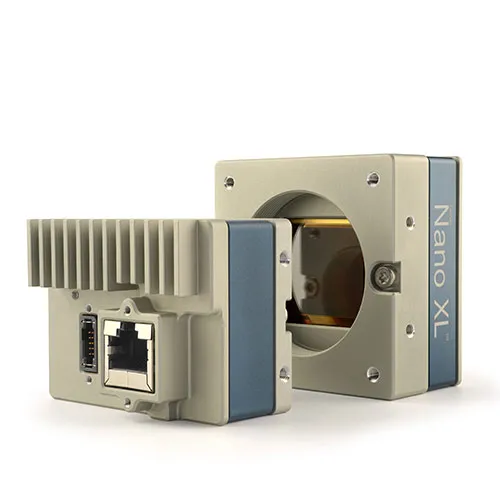
Teledyne Dalsa’s Manny Romero looks at how the combination of camera manufacturer and software provider can make enforcement easier.
Californian video analytics solution provider
Recently it developed a red light violation detection system which it says is cost-effective and has improved performance. The move follows a request from a company that operates red light violation and speeding detection systems, traffic surveillance networks and other video- and radar-based solutions for municipalities across the US.
According to Andrew Herson, senior manager of advanced HW products at Eutecus, typical red light violation detection systems require magnetic sensors in the roadway to complement the video sensors used to detect violators, “an approach that is costly and error prone.” To confirm violators he says the video is transmitted to a centralised facility for manual review which, along with construction and data transfer, adds up to a costly system that creates too many false positives.
“To meet the specific requirements, we wanted to integrate a camera with our Bi-i Smart Cube to run our Multi-core Video Analytics Engine (MVE) on the video stream,” said Herson.
Recommendations led Eutecus to evaluate camera systems developed by
“Teledyne’s Genie cameras offer the resolution, frame rate and large pixel size to optimise performance and the Camera Link interface required by our application,” he adds.
The combined Genie TS camera and Bi-i Smart Cube gathers the same images used by more traditional traffic monitoring applications and then parses the data so that only the violations are captured. So while the camera acquires frames continuously, images are automatically discarded unless a violation is detected. In this application, the camera provides the primary video analytics source, monitoring both the traffic light and the traffic itself while the Bi-i Smart Cube provides the enforcement processing.
“This scene analysis is combined with data from radar, which is still required by law, and a second, low-resolution video camera provides contextual documentation for verification in the event a driver disputes a ticket,” says Herson. “The Genie camera essentially ‘maps’ distinct images of the traffic light as well as images of the vehicle in relation to the intersection stop line.”
While each municipality has its own requirements, the system is generally designed to send only a picture frame to the operator if the images of the traffic light and vehicle/stop line don’t align as they should, indicating a violation. The operator confirms the violation and generates a ticket without the need for a lengthy video review.
“The Eutecus/Teledyne solution incorporates all needed functionality in a single system,” Herson says. “The ‘intelligence’ that operates the system is embedded with the Genie TS camera, so the entire solution can be installed above ground, providing a streamlined solution that is far less costly than traditional traffic enforcement applications. Plus, the solution can capture and process multiple events simultaneously, such as if more than one car runs a red light at the same time. Overall, the Eutecus/Teledyne solution decreases costs from installation to enforcement by offering a more accurate system that is less expensive to install and operate.
“We’re excited to see how companies like Eutecus are utilising features like Region of Interest and burst-mode to deliver results that are, improving traffic enforcement and flow in a cost-effective way,” said Teledyne Dalsa sales manager Glen Ahearn.
Currently this solution is being used for red light violation, but Eutecus sees other potential applications in areas that have traditionally required major roadway construction or significant operator involvement. These include toll-road enforcement as well as speeding, wrong-way driver and stopped-vehicle detection, and red light control—turning lights green when there is no opposing traffic.
- About the author: Manny Romero is product manager for Teledyne Dalsa’s Genie series of cameras.









